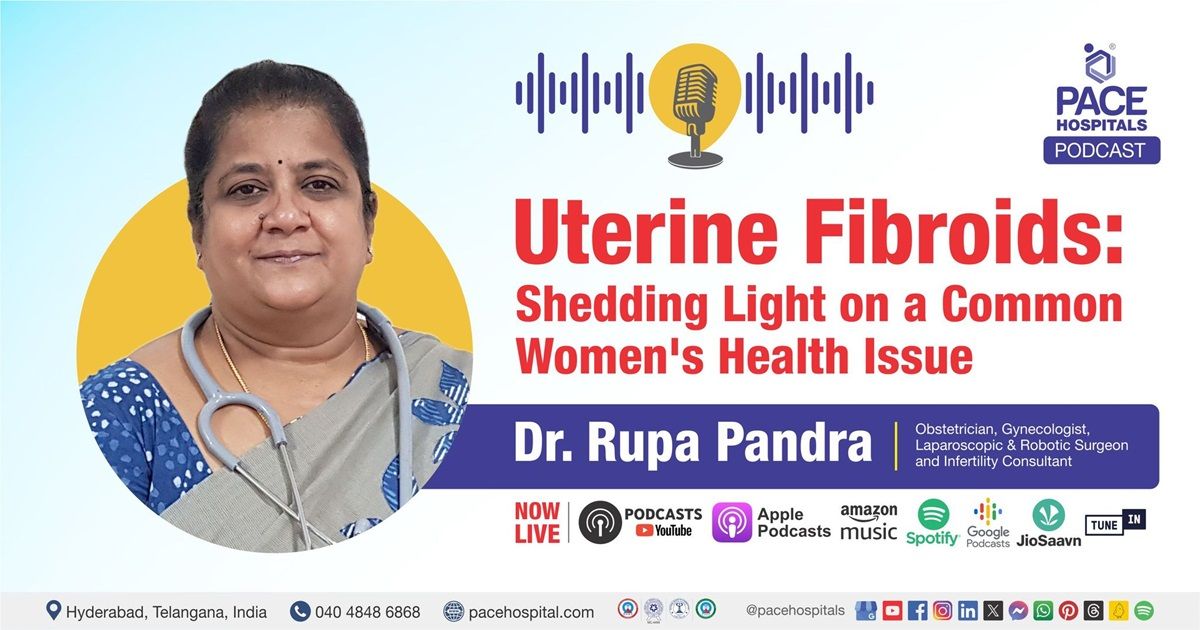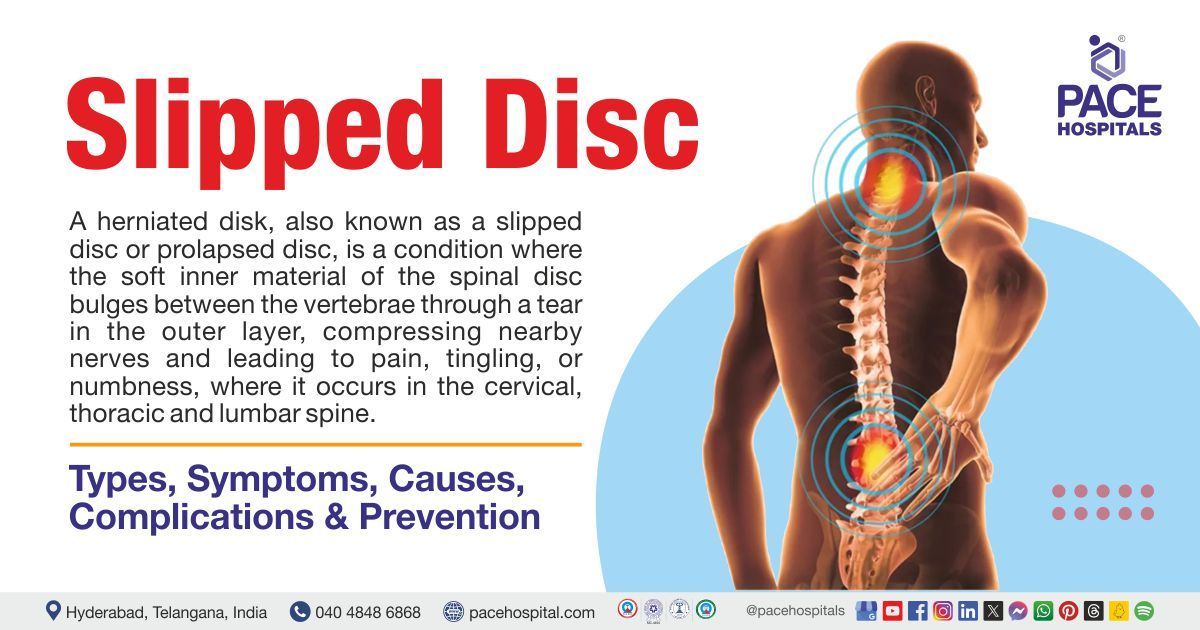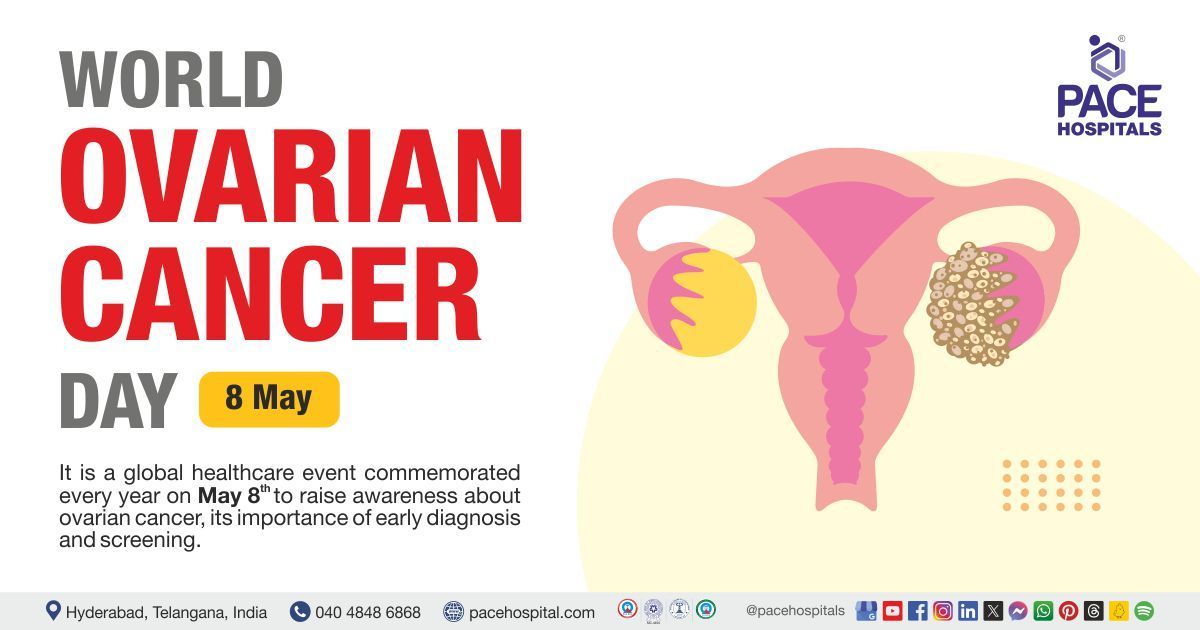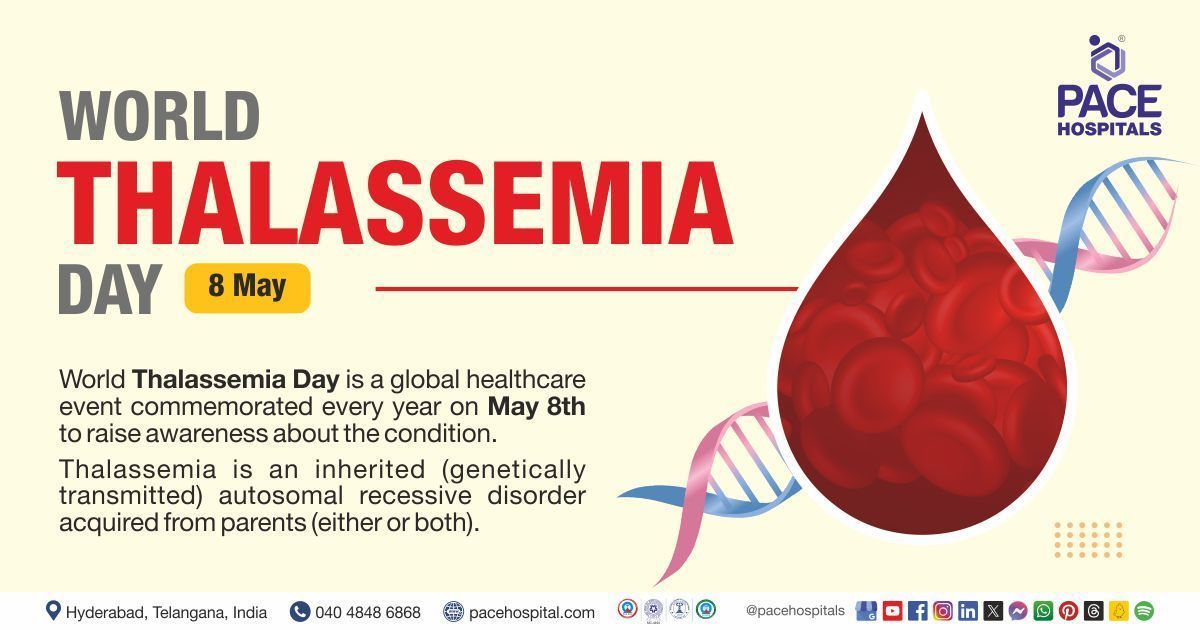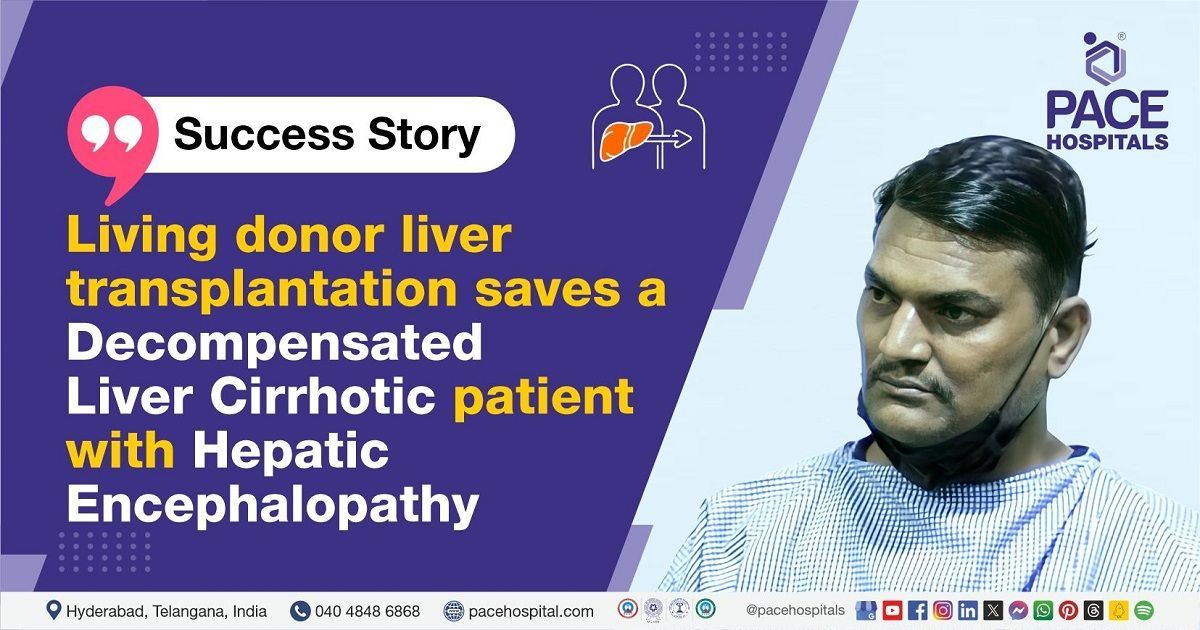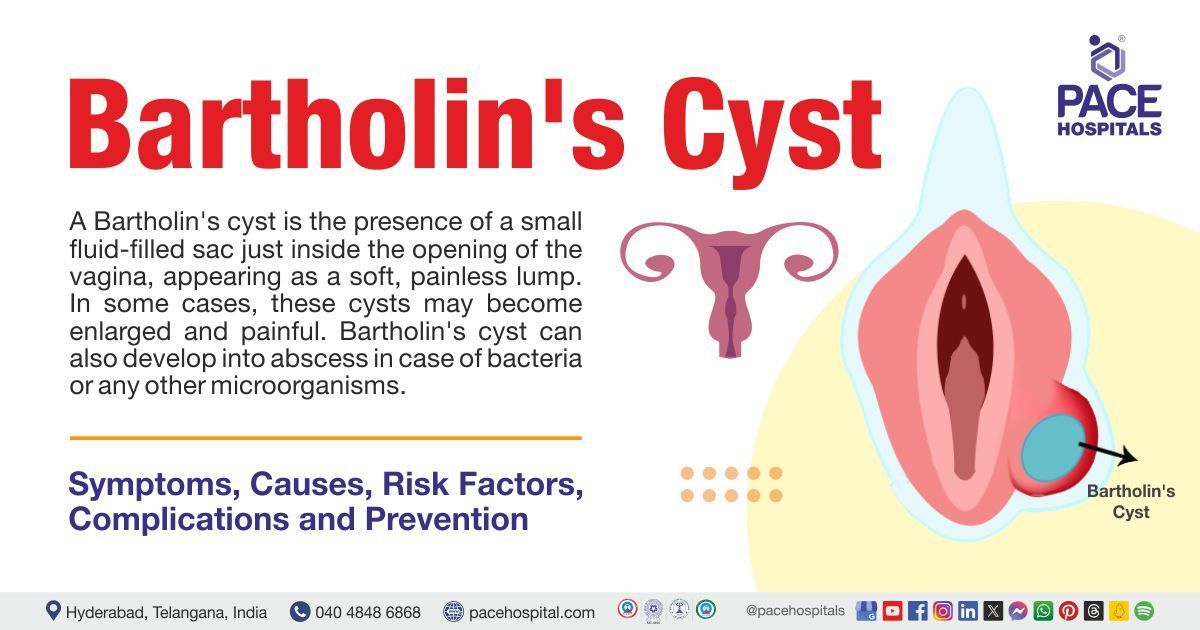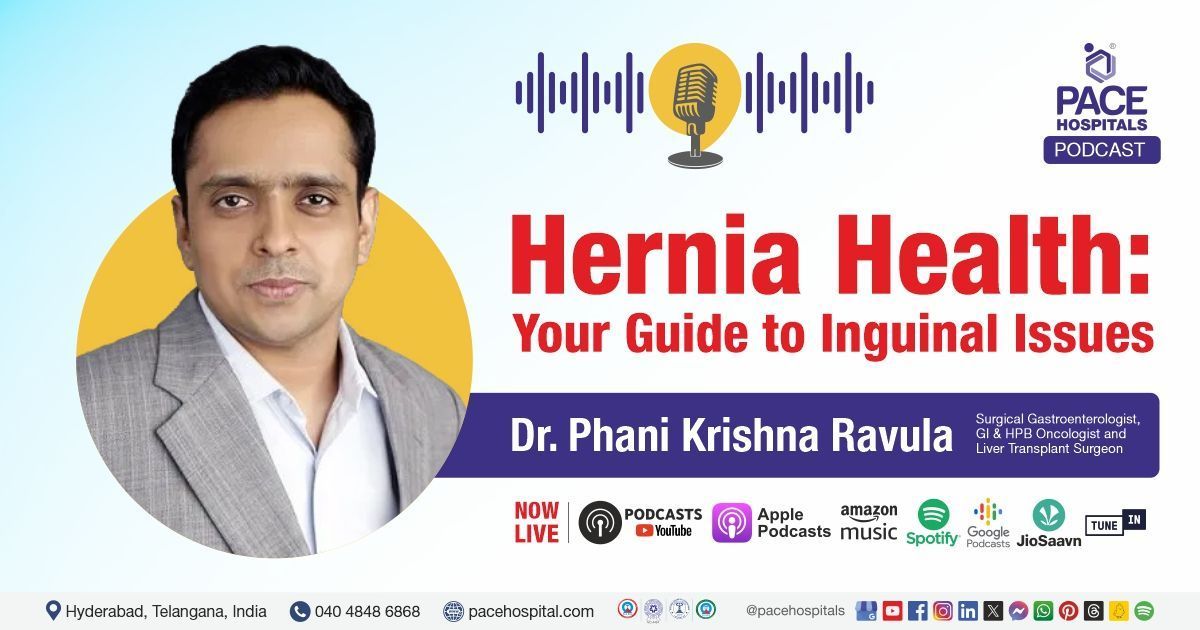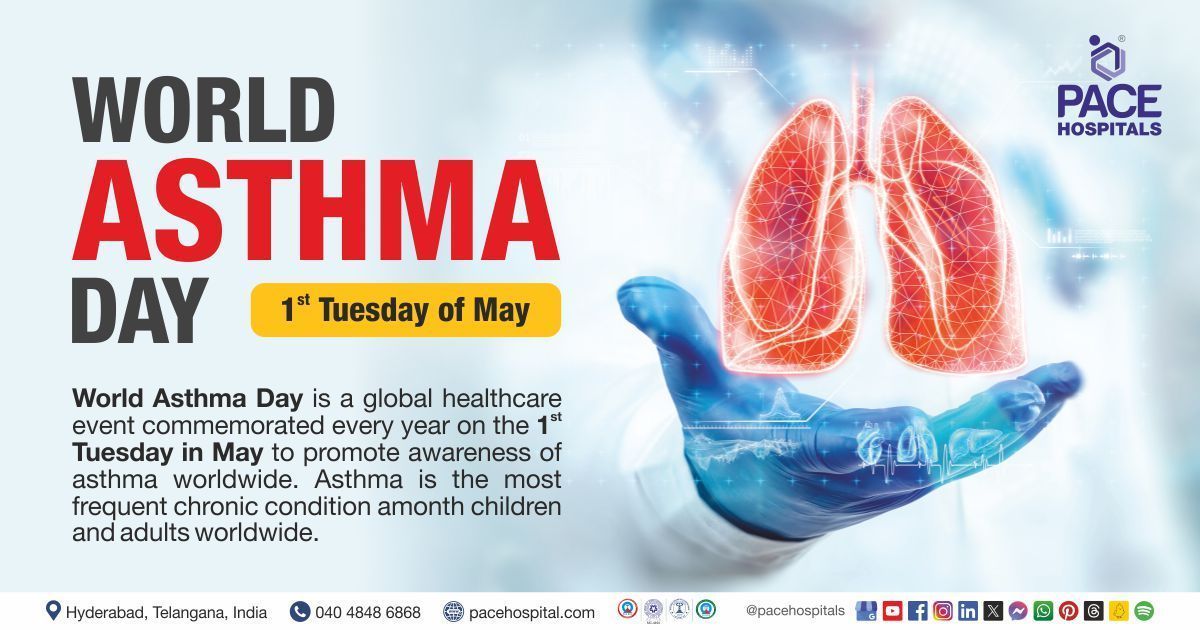Uterine Fibroids: Shedding Light on a Common Women's Health Issue
Listen to
Uterine fibroids are common non-cancerous tumors that grow in and on the uterus. Not all uterine fibroids cause symptoms, but when they do, symptoms may include heavy menstrual bleeding, back pain, frequent urination, and painful intercourse.
Uterine fibroids are a common yet poorly understood health issue affecting countless women worldwide. However, it is often overlooked. In this episode of the Uterine Fibroids podcast, we will delve into the complexities of this condition and offer a comprehensive guide to help navigate the path to wellness.
Join the
PACE Hospitals Podcast with
Dr. Rupa Pandra - Obstetrician, Gynecologist, Laparoscopic Surgeon, and Infertility Consultant at PACE Hospitals, Hitech City, Hyderabad, India, to discuss uterine fibroids, a condition that affects many women but is often unspoken and misunderstood.
-
Transcript
Host: Hello and welcome to Pace Hospitals podcast. Today we delve into the often overlooked topic uterine fibroids, a common yet poorly understood health issue affecting countless women worldwide.
Joining us today, Dr.Rupa Pandra, obstetrician, gynecologist, laparoscopic surgeon and infertility consultant, having wide expertise in training and managing uterine fibroids. In this episode, she would like to shed light on what uterine fibroids are, their symptoms, and the various treatment options available.
Dr.Rupa Pandra, thank you for joining us at Pace hospitals.
Doctor: Thank you for inviting me. Today I will be discussing on the topic uterine fibroid, a health issue that affects millions of women worldwide and it is often overlooked. Uterine fibroids can have a significant impact on a woman's life, from reproductive health to overall well-being.
Host: Dr. Rupa, thank you for joining us. Let's start by understanding exactly what are the uterine fibroids?
Doctor: Uterine fibroids are actually benign tumors which arise from the smooth muscle of the uterus. To understand what is benign, benign means non-cancerous tumors and malignant means cancerous. So most of the fibroids are benign tumors and they arise from the smooth muscle. The uterus is made of smooth muscle from which these tumors arise, so most of the fibroids are non cancerous growths in the uterus.
Host: Doctor, can you explain the different types of uterine fibroids and where are they found?
Doctor: So usually patients have a lot of doubts regarding the difference between a cyst and a fibroid. A fibroid usually arises from the uterus. The cysts are tumors or swellings which arise from the ovaries. So that is the difference, so fibroids arise from the uterus, the cysts arise from the ovaries.
So these fibroids are divided into three types depending on which layer of the uterus they are arising from. So first of all, you should know the uterus is made up of three layers, the outer layer, which is called the perimetrium, the middle layer, which is called the myometrium, the inner layer, which is called the endometrium and the mucosal layer.
So the fibroids which arise from the outer layer are called the subserus fibroids. The fibroids arising from the middle layer or the myometrium are called the intramural fibroids. The fibroids occurring in the mucosal layer, that is the third layer of the uterus, are called the submucosal fibroids.
Host: What are the most common signs and symptoms of uterine fibroids?
Doctor: The fibroids which arise from the middle layer and the inner layer are more symptomatic. These are the fibroids which cause most of the symptoms and the fibroids arising from the outer layer of the uterus. They cause symptoms when they become very gigantic. Otherwise, usually they are asymptomatic.
The common symptoms which we see in patients, they usually present in the OPD with complaints of severe abdominal pain during the cycles or even throughout the month, irrespective of the cyclical pain and they complain of heavy menstrual bleeding and if the fibroids are very large and multiple and the uterus has enlarged very much in size, then they can have pressure symptoms due to pressure on the urinary bladder or on the large intestines and they can cause GI symptoms like constipation and if they are causing pressure on the urinary bladder then they can cause symptoms like increased frequency of urination. So these are the common symptoms which the patient presents in our opt when they are having fibroids
Host: Why fibroids cause heavy bleeding and pain during menstrual period?
Doctor: So whenever the tumor is growing within the muscle of the uterus, as the tumor grows, the vascularity, vascularity means the blood supply to the fibroids also is increased the surface area because whenever the tumor is growing, the muscle in the uterus also is growing.
So there is increased surface area of the uterus and also there is submucosal thickening in case of patients who are having fibroids. So these are some of the common causes which cause heavy menstrual bleeding during the cycles or irrespective of the menstrual cycle in patients suffering from fibroids.
Host: What does the typical process for diagnosing fibroids involve and what can patients expect from it?
Doctor: When a patient comes to the gyneic OPD, a detailed history is taken from the patient regarding the abdominal pain, about her heavy menstrual bleeding, if she has any other urinary symptoms or any GI symptoms and depending on her clinical history we come to a clinical diagnosis and after that some basic investigations like blood investigations like complete blood picture to know what is her haemoglobin, then basic ultrasonography of the abdomen and pelvis is done to know whether there is any fibroid in the uterus or any other cause of bleeding is detected by a simple basic ultrasound abdomen and pelvis.
And after assessing the ultrasound report, if patient requires an MRA abdomen and pelvis that is also advised which gives a better picture of the size of the fibroid, the location of the fibroid and the involvement of the fibroid into the endometrial cavity, this is called fibroid mapping. An MRI and MRI of abdomen and pelvis for fibroid mapping helps the surgeon to do the surgery better.
Host: How common are uterine fibroids and who is most likely to develop them? Can you also tell the common risk factors for developing the uterine fibroids?
Doctor: Incidence of fibroids are almost ten to 12% and in India we are diagnosing more than ten lakh women have been diagnosed per year with uterine fibroids. Nowadays the incidence of fibroids is increasing, maybe because of the lifestyle changes and also because women are becoming more aware and they are going for regular health checkups where the investigations being done are detecting the fibroids at an early stage.
Host: Now why is there more incidence compared to what it was ten to 15 years ago?
Doctor: Because there is increase in obesity, increased lifestyle, there is decreased physical activity in the women and due to stress related factors and late marriages is one of the cause because late marriages there is nulliparity is one of the causes of increased incidence of fibroids. So nulliparity or early menarchy then obesity and all these lead to hyperestrogenism which increases the incidence of fibroids and rapid growth of the fibroids.
Host: Are uterine fibroids genetic? And what are the common misconceptions about age and uterine fibroid?
Doctor: There are some studies which show that fibroids runs in the families, so suppose the mother or mother's sisters or own sisters siblings are suffering from fibroids. There is increased incidence of a person in the family having fibroids.
So thus there is importance of asking the patient whether there is any family history of fibroids and explaining to them that there is a genetic inheritance does anybody in the family has fibroids, the other women in the family should have a regular checkup to see if there is any incidence of the fibroids. So according to the age groups, fibroids were noted very much more above 40 years. About 43.6% of women who were diagnosed with fibroids were above the 40 years of age group.
But nowadays we have seen many young women, adolescent women, unmarried with very large giant and multiple fibroids. Thus nowadays women should undergo regular annual checkup to detect fibroids at an early stage.
Host: What kind of fibroids affect the fertility?
Doctor: Usually the submucosal fibroids arising from the inner layer of the uterus and the intramural fibroids are the common cause of fertility in women. So submucosal fibroids can cause implantation failure of the embryo and submucosal and intramural fibroids are the common causes for causing abortions in women who have already conceived. So whenever a patient first conceived and undergoes repeated abortions, there is a need for surgery. After explaining to the patient that the cause for her abortion are the fibroids.
Host: How to detect early stage of uterine fibroid and what are the surgical treatment options available for uterine fibroids?
Doctor: Many women, when we come to when many pregnant women, when we see them in the OPD, sometimes along with their pregnancy, we would find that there is an intramural or subseris or submucus fibroid, so how do these fibroids affect the pregnancy?
So in the first trimester the patient may complain of spotting, they may have threatened miscarry, that means they complain of intermittent bleeding during pregnancy and in the second trimester, that is from third to six months of pregnancy, they can have mid trimester abortions and suppose if they have crossed six or seven months of pregnancy, in the third trimester of pregnancy, patient can complain can present with abruption placenta, that is premature separation of placenta before term pregnancy which can lead to emergency delivery and preterm delivery for the patient.
Host: Is it actually possible to prevent urine fibroid? If not, what can we do to lower our risk?
Doctor: So I would advise every woman from 20 to 21 years of age to undergo regular gynecological checkup with a gynecologist and undergo a basic ultrasound examination of abdomen and pelvis at least once in a year or once in two years so that the fibroids can be detected early.
As the incidence of fibroids is increasing very rapidly and by the time the patient is seen by the gynecologist and the gynecopd, the fibroids are seen in a very large size and there is lot of rapidly increasing growth in the fibroid these days.
So this can be avoided by regular checkup with a gynecologist. So I would advise every patient to undergo an annual gyneic checkup like how we go for a regular health medical checkup every year. I think it is mandatory for every woman to undergo a gyneic annual health checkup.
So wherever surgery is indicated for a woman suffering from fibroids, depending on her symptoms and her location of the fibroid nowadays we do minimal access surgeries for removing the fibroids.
Initially previously, about 20 to 25 years back, open surgeries were done for fibroids. The removal of only the fibroid is called myomectomy, so in women who are pre-menopausal or postmenopausal, where the uterus is not needed and who have completed family for them, we would advise a hysterectomy.
And if patients want only myomectomy and want to keep the uterus, we would explain the recurrence of fibroids and then only proceed for hysterectomy, but for women who have not completed family, who are unmarried, the procedure we do is myomectomy.
Myomectomy is a procedure where the uterus is preserved and only the fibroids are removed. The surgeries which we do are laparoscopic surgeries, histroscopic surgery and robotic surgery for myomectomy. So myomectomy is a procedure where we separate or dissect the fibroids from the uterine wall and they are removed and the gap which is seen in the uterus is sutured and closed.
So in laparoscopic procedure, it is a day-care procedure or patient has to be hospitalized in the hospital for two or three days depending on the severity, the time of the surgery and depending on the post-operative recovery.
If it is a very small fibroid, small in the sense where the surgery has not taken a long time, the anesthesia has been given only for a short while, the patient can be discharged on the same day, but if the surgery was prolonged and it was a complicated surgery and anesthesia time was prolonged and patient has other medical comorbidities, then the patient is hospitalized for two days and she will be discharged on the second day itself.
So the advantages of minimal access surgery over open laparotomies is there is no scar, very small scars of one or less than 1cm given to the patient and the patient, postoperative recovery is very good and during the surgery, because of laparoscopic and robotic surgeries, there is less bleeding and less handling of the tissues where the damage to the tissues is less, the postoperative recovery is better and there is less blood transfusions with laparoscopic and robotic surgeries compared to the open surgeries.
And the woman can resume her normal routine activity, household activity or her professional activity in one week time or she can take rest for one week and resume her routine activities. So I would advise the patients who are suffering from fibroids not to have a fear that it is a very dangerous tumor.
It is a benign and non-cancerous tumor which can be treated and technology has advanced so much that the patient can be operated in one day and can be discharged on the same or the next day and she can have a routine normal life within one week time.
Host: Thank you Dr. Rupa for sharing valuable medical insights regarding the uterine fibroids.
Doctor: I hope this information will empower listeners by understanding that uterine fibroids are more than a medical condition. Let's break the silence, foster understanding and embark on a journey towards better reproductive health together.
Host: If any of you have any further questions regarding uterine fibroids please don't hesitate to consult a gynecologist. Remember, knowledge is a powerful tool, by staying informed and connected we can empower ourselves and others in the journey towards better repro productive health.
Thank you for tuning in to Pace Hospital's podcast and until next time take care, be well and continue to break the silence surrounding uterine fibroids.
Request an appointment
Fill in the appointment form or call us instantly to book a confirmed appointment with our super specialist at 04048486868
Appointment request - health articles
Thank you for contacting us. We will get back to you as soon as possible. Kindly save these contact details in your contacts to receive calls and messages:-
Appointment Desk: 04048486868
Whatsapp: 8977889778
Regards,
Pace Hospitals
Hitech City and Madinaguda
Hyderabad, Telangana, India.
Oops, there was an error sending your message. Please try again later. We will get back to you as soon as possible. Kindly save these contact details in your contacts to receive calls and messages:-
Appointment Desk: 04048486868
Whatsapp: 8977889778
Regards,
Pace Hospitals
Hitech City and Madinaguda
Hyderabad, Telangana, India.
Our Locations
Subscribe to our newsletter and stay updated with the latest health information.
By clicking on subscribe now, you accept to receive communications from PACE Hospitals on email, SMS and Whatsapp.
Subscribe to PACE Hospitals News
Thank you for subscribing. Stay updated with the latest health information.
Oops, there was an error. Please try again submitting your details.
-

Payment in advance for treatment (Pay in Indian Rupees)
For Bank Transfer:-
Bank Name: HDFC
Company Name: Pace Hospitals
A/c No.50200028705218
IFSC Code: HDFC0000545
Bank Name: STATE BANK OF INDIA
Company Name: Pace Hospitals
A/c No.62206858997
IFSC Code: SBIN0020299
Scan QR Code by Any Payment App (GPay, Paytm, Phonepe, BHIM, Bank Apps, Amazon, Airtel, Truecaller, Idea, Whatsapp etc)
Call us at 04048486868
ADDRESS
PACE Hospitals
Hitech City : Beside Avasa Hotel, Pillar No. 18, Hyderabad - 500081
Madinaguda: Mythri Nagar, Beside South India Shopping, Madinaguda, Hyderabad - 500050
QUICK LINKS
Disclaimer
General information on healthcare issues is made available by PACE Hospitals through this website (www.pacehospital.com), as well as its other websites and branded social media pages. The text, videos, illustrations, photographs, quoted information, and other materials found on these websites (here by collectively referred to as "Content") are offered for informational purposes only and is neither exhaustive nor complete. Prior to forming a decision in regard to your health, consult your doctor or any another healthcare professional. PACE Hospitals does not have an obligation to update or modify the "Content" or to explain or resolve any inconsistencies therein.
The "Content" from the website of PACE Hospitals or from its branded social media pages might include any adult explicit "Content" which is deemed exclusively medical or health-related and not otherwise. Publishing material or making references to specific sources, such as to any particular therapies, goods, drugs, practises, doctors, nurses, other healthcare professionals, diagnoses or procedures is done purely for informational purposes and does not reflect any endorsement by PACE Hospitals as such.

